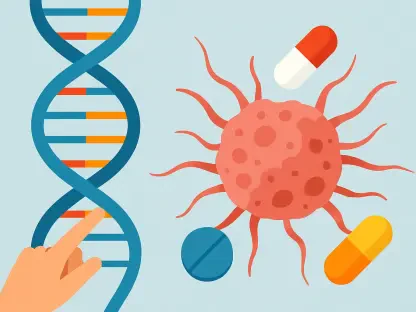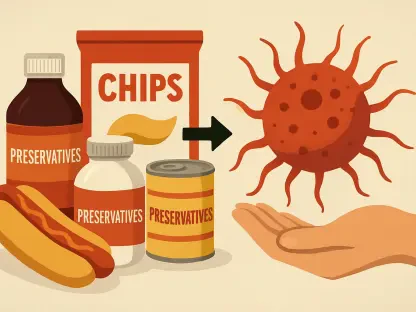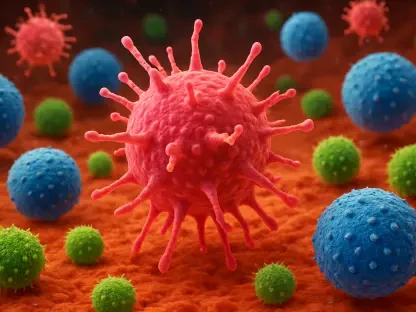Recent advancements in cancer research have unveiled a surprising potential therapeutic agent against one of the deadliest forms of cancer: pancreatic cancer. Central to this innovation is stevia, a plant usually celebrated for its role as a calorie-free sweetener. Now, through bacterial fermentation, it is showing promise as a selective anticancer agent. This groundbreaking development could redefine our approach to cancer treatment, positioning stevia not just as a dietary supplement, but as an essential weapon in the fight against pancreatic cancer, which is notorious for its resistance to conventional treatments.
Harnessing the Power of Fermentation
Fermentation Process and Biological Transformations
Fermentation, a process traditionally used to preserve food and enhance its nutritional value, is now at the heart of this promising cancer research. When stevia is fermented using Lactobacillus plantarum SN13T, a bacterium commonly associated with banana leaves, new bioactive compounds form, revealing potent anticancer properties. The research, spearheaded by a team from Hiroshima University, meticulously optimized this fermentation to ensure the highest efficacy. By controlling variables such as fermentation time, temperature, and oxygen exposure, researchers crafted a specifically potent extract. After 72 hours of anaerobic fermentation at 37°C, the stevia extract showed a remarkable ability to target and destroy pancreatic cancer cells selectively, leaving healthy cells largely unharmed.
This selectivity is critical since traditional cancer therapies often pose collateral damage to healthy cells, leading to significant side effects. In laboratory conditions, the fermented stevia extract (FSLE) displayed a striking capacity to impair cancer cell functionality, hindering their growth and making them fragile. Microscopic examinations revealed that cancer cells exposed to FSLE lost their structural integrity, while healthy cells maintained their robustness. This specificity not only implies potential effectiveness as a cancer treatment but also highlights the nuanced action of FSLE on cellular biochemistry.
Antioxidant Properties and New Compound Activity
Beyond its targeted action against cancer cells, the fermented stevia extract has shown other beneficial properties, notably its antioxidant capabilities. Oxidative stress, a condition characterized by an imbalance between free radicals and antioxidants in the body, can lead to cancer progression. The FSLE demonstrated superior free radical-scavenging abilities compared to non-fermented stevia, achieving 94% effectiveness in the DPPH assay and 75% in the ABTS test—both standard measures of antioxidant capacity.
Central to the effectiveness of FSLE is the formation of chlorogenic acid methyl ester (CAME), a compound absent in raw stevia but abundant post-fermentation. This compound has shown potent effects in arresting cancer cell growth and facilitating apoptosis—a process where cancer cells self-destruct. In comparative studies, CAME required lower concentrations to achieve similar cell-killing effects as its precursor, chlorogenic acid, underscoring its enhanced bioactivity. Its ability to halt cells in the G0/G1 phase of the cell cycle and initiate mitochondrial pathway apoptosis positions CAME as a potential key player in the development of non-invasive cancer therapies.
The Mechanism of Action
Cellular and Genetic Impacts of CAME
The impact of CAME extends beyond its chemical composition, influencing the delicate balance of cellular and genetic expressions within cancer cells. At a cellular level, CAME impedes progression through the cell cycle, effectively paralyzing cancer cells’ replication abilities. It also facilitates the release of cytochrome c and activation of caspases, proteins that are instrumental in the self-destruction pathways of cells, targeting molecular processes fundamental to cell survival and replication. These biochemical disruptions are crucial, as they cause cancer cells to dismantle themselves from within, bypassing the defenses that typically allow them to thrive.
On a genetic level, CAME triggers specific gene activities that further dismantle cancer cell defenses. Genes like Bax, Bad, Caspase-3, and Caspase-9, noted for their roles in promoting apoptosis, are upregulated. Conversely, Bcl-2, which aids cell survival by preventing apoptosis, is suppressed. This regulatory effect shifts the balance towards cell death, aligning genetic behavior with observed cellular outcomes and demonstrating the compound’s potential in eradicating cancer cells at a fundamental level.
Potential for New Therapeutic Applications
The transformation of stevia into a potential cancer therapy illustrates the untapped potential of natural compounds when enhanced through biological processes. The role of Lactobacillus plantarum SN13T is particularly noteworthy, acting as a catalyst in creating effective anticancer agents from ordinary plant derivatives. The specific enzymes within this bacterium drive critical structural changes in stevia compounds, offering a glimpse into future natural therapies specifically tailored by microbial actions.
The path forward is pivoting towards in vivo studies, with researchers aiming to transition from cell-based laboratory experiments to preclinical trials involving mouse models. These studies will provide deeper insights into how FSLE interacts within a living system, further assessing its efficacy and safety. Understanding its potential effects on diverse biological pathways in complex living organisms is crucial before contemplating clinical applications.
Future Perspectives
Recent developments in the field of cancer research have spotlighted a surprising candidate for combating one of the deadliest types of cancer: pancreatic cancer. This advancement revolves around stevia, a plant commonly known for its application as a no-calorie sweetener. However, stevia has demonstrated potential beyond the culinary world, emerging as a promising anticancer agent through a process involving bacterial fermentation. This discovery is groundbreaking and could significantly alter our strategies in cancer treatment. Typically, pancreatic cancer is known for its aggressive nature and resistance to traditional therapies, making it one of the most lethal cancer types. Stevia’s newfound role positions it as more than just a dietary supplement; it becomes a potential key player in the battle against pancreatic cancer. Such an innovative approach might offer hope where conventional treatments fall short, highlighting the importance of alternative therapeutic strategies in the ongoing fight against cancer.









